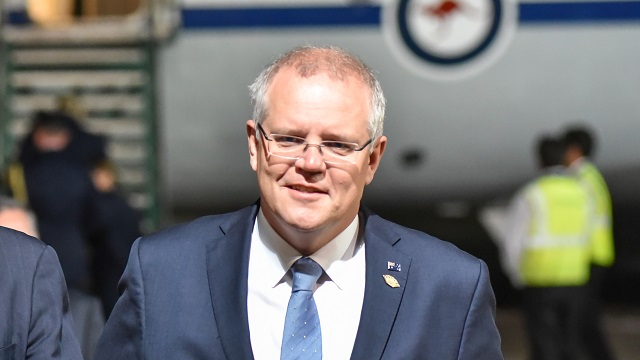
Just as the government was making plans to bring its income support to an end come September, the prime minister confirmed Wednesday that it will be extended.
The government also now has to deal with the implications of a second lockdown in Victoria.
“Where there is the need, then there will continue to be support,” Prime Minister Scott Morrison said, reassuring those who feared the government’s income support programs, JobKeeper and JobSeeker, would end too soon.
Morrison confirmed that government support will be extended beyond September and will remain a national program, but he did not provide details of exactly what that will look like.
The prime minister also said the government will tailor a national program to provide support where it is needed.
“Because of what has happened in Victoria, obviously the need there will be far greater than was previously and that need will be met,” Morrison said.
“When you have a situation of an outbreak, you contain the outbreak. And that outbreak is presently in Melbourne,” he said. “And to ensure we don’t get further breaches of that, that outbreak is being contained now at the Victorian border.”
Businesses in Victoria are now bracing for a second wave of economic uncertainty as the newly imposed government restrictions disrupt operations.
The treasurer, Josh Frydenberg, said the government will announce the new phase of income support on July 23. The JobKeeper and JobSeeker programs are currently being funded until the end of September.
Budget blowout
The government spent $79.5 billion in May, which is 40 per cent higher than what it spent in the same period last year while revenue plunged 18 per cent to $9.7 billion.
The country’s budget deficit is expected to blow out to $230 billion.
Australia’s second largest bank has updated its economic forecasts and is predicting Federal budget deficits for 2019/20 and 2020/21 to be $95 billion (4.8 per cent of GDP) and $240 billion (12.2 per cent of GDP), respectively.
“That is a change from the $80 billion and $170 billion that we anticipated as of 25 May (after the JobKeeper package was downgraded from $130 billion to $70 billion).”
The lift in the estimated deficit for 2019/20 is due to an upward revision to the cyclical deficit. Westpac stated the 2020/21 budget deficit of $240 billion is comprised of: a cyclical deficit of $100 billion (5 per cent of the GDP); around $90 billion in fiscal stimulus – as already announced; as well as about $50 billion of new spending – which includes approximately $35 billion to extend and modify the JobKeeper and JobSeeker packages plus a $15 billion stimulus package to be unveiled on budget day on October 6.
“We have endeavoured to set out a framework for considering this highly complex issue and providing some rational basis for what is certain to turn out to be a staggering deficit (12.2 per cent of GDP) in 2020/21,” Westpac said.
Westpac said their data shows that current large users of the JobKeeper program are the professional services, 393, 424 (12 per cent) ; health care, 385,679 (11.7 per cent); construction (348,077, 10.5 per cent) ; retail, 313,357 (9.5 per cent) and manufacturing, also at 9.5 per cent.
The ABS report indicates that as of mid-June there were still many firms in those industries facing extreme difficulties (revenue down 50 per cent in June year on year).
“We estimate that there will be some scope in the transition package to accommodate those firms but most of those firms will lose the JKP.”
According to the bank, the treasurer is scheduled to provide an economic and fiscal outlook on July 23 when some official estimates of these fiscal forecasts will be available.





